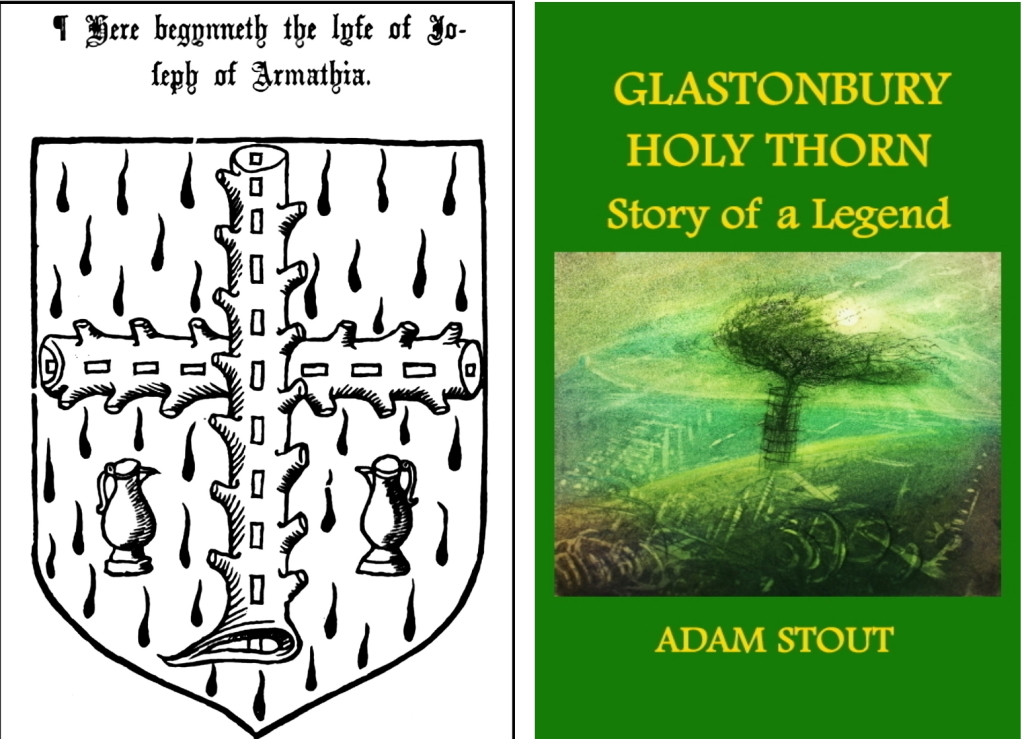
It’s been one hell of a year for a lot of people, so it’s not surprising that such things as historical anniversaries have gone widely unmarked. Who knew, for instance, that June 2020 was the five hundredth anniversary of the Field of the Cloth of Gold, Henry VIII’s magnificent blingfest, held on the frontier of his empire (just outside Calais) to impress his French neighbour? 1520 was also the year in which the Glastonbury Thorn finally made it into print, and I don’t think that these two events were unconnected. The Abbot of Glastonbury was keen to impress his nationalistic monarch with evidence of why his establishment was a blessing to ‘great brytayn fortunate’, and the winter-flowering thorn tree was, literally, a godsend. It was a miracle that proved Glastonbury to be ‘the holyest erth of england’, ‘a principall place chosen of Christ moost speciall’.
The miraculous tree made its mark. When Thomas Cromwell’s commissioners came to appraise its wealth, they sent a sample of its blossom to their boss, but it didn’t do the abbey any good. In 1539 the monastery was dissolved and its abbot hanged, drawn and quartered. But the thorn itself survived, and became the stuff that myth is made from. Stories grow on this famous tree like fruit, and wrap around it like creepers. It’s a shape-shifter. It’s been Catholic, Protestant, Pagan, universal. It’s succoured royalty, loyalty, defiance and subversion. It’s been condemned as patriarchal and revered as a feminine spirit. It’s been harnessed by imperialists and peacemakers and nationalists and universalists. It’s stood for better times and better days. For Christmas cheer and better nature, for all trees and all nature, for peace and for hope.
And now, in 2020, a mere half-millennium since its first appearance in print, the Thorn has got its own book at last. The fruit of fifteen years of research, Glastonbury Holy Thorn: Story of a Legend combines erudition and humour with a sly but sincere commentary on five centuries of England’s quest for a soul.

Glastonbury Holy Thorn: Story of a Legend is available in hardback for the ludicrously low price of £12.99, for which you get 156 well-illustrated pages, plus a further sixteen pages in full colour. Available from the publisher postage free within the UK, and at discounted rates to more far-flung destinations: https://checkout.square.site/buy/HYEXWWU2VUSHQLNAHDM7GD4E
Sample chapter here, to whet your appetite: https://drive.google.com/file/d/1fUOBso1nLgc1feUmFN1vyh2Y39SLmHDU/preview
Comments so far, from the great and the good:
“surely the definitive work on its beloved and important subject” (Ronald Hutton, Professor of History, University of Bristol)
“By steering a route between cold academic analysis and the more way-out beliefs which flourish in Glastonbury, Stout has created a valuable account of the Thorn” (Roy Vickery, author of Plant Lore)
and there’s a lovely review on Google Books:
“Of the Glastonbury legends, the story of Joseph of Arimathea bringing the Holy Grail to Avalon is the headline act, the stuff of blockbuster quest narratives. But Adam Stout’s excellent book focuses on another legend – the one in which Joseph’s hawthorn staff miraculously springs to life when planted in Somerset soil, blossoming ever-after on Christmas Day – and it proves every bit as fascinating. Stout traces the remarkable ways in which, for over 500 years, various folk have bought into or challenged the thorn legend, for reasons both sacred and secular. It’s a local history that resonates nationally and internationally, with the thorn serving as a kind of MacGuffin that drives the whole weird and wonderful plot. This is an impeccably researched, beautifully produced and highly readable book, leavened throughout with warmth and wit. It’s clearly a labour of love. Stout calls his work ‘the biography of a symbol’ and the cumulative effect is oddly moving as we see the plucky, beleaguered thorn (and its offshoots) weather historical storms – wars, schisms, cultural revolutions – right up to the modern era, where it continues to attract both devotion and desecration. Anyone interested in the interplay of legend and history will be captivated by this book.”
https://books.google.co.uk/books/about/Glastonbury_Holy_Thorn.html?id=64qrzQEACAAJ&redir_esc=y
It sounds fascinating Adam, Ive always loved the Holy Thorn trees in Glastonbury. The book is ordered and yes an excellent price and free postage xx
LikeLike
Thanks! Copy on its way.
LikeLike
Will you be making this available as an ebook please – on Google Books?
LikeLike
Ooh I hadn’t thought of that. I’ll look into it & find out how it’s done. Thanks for the tip!
LikeLike